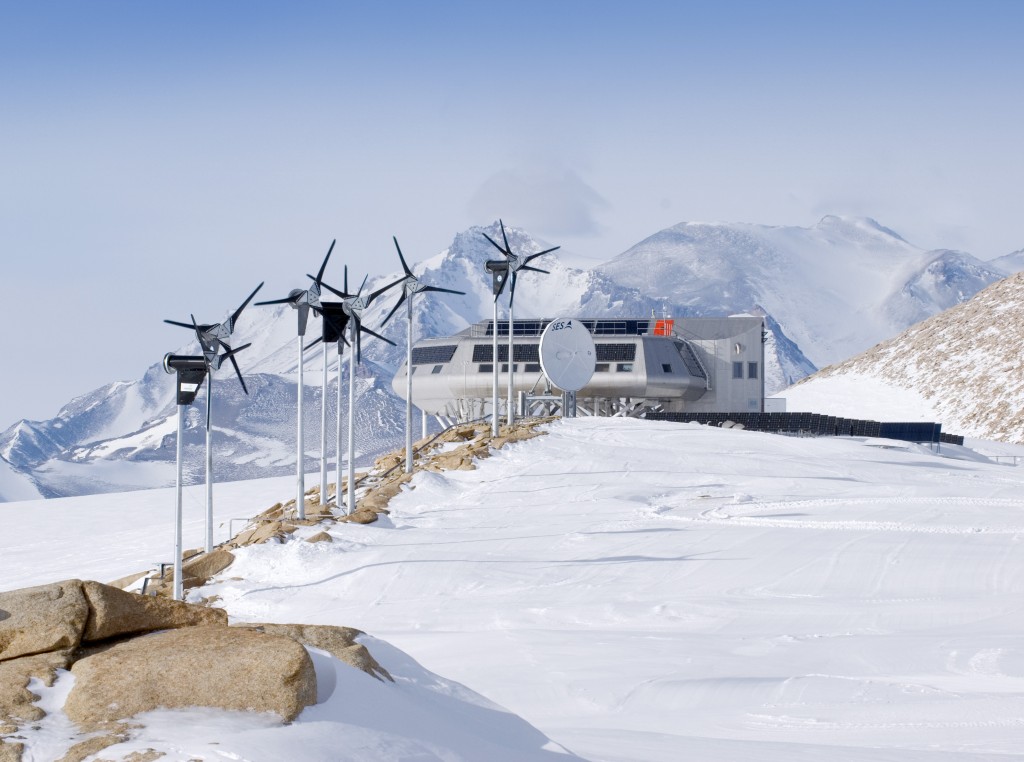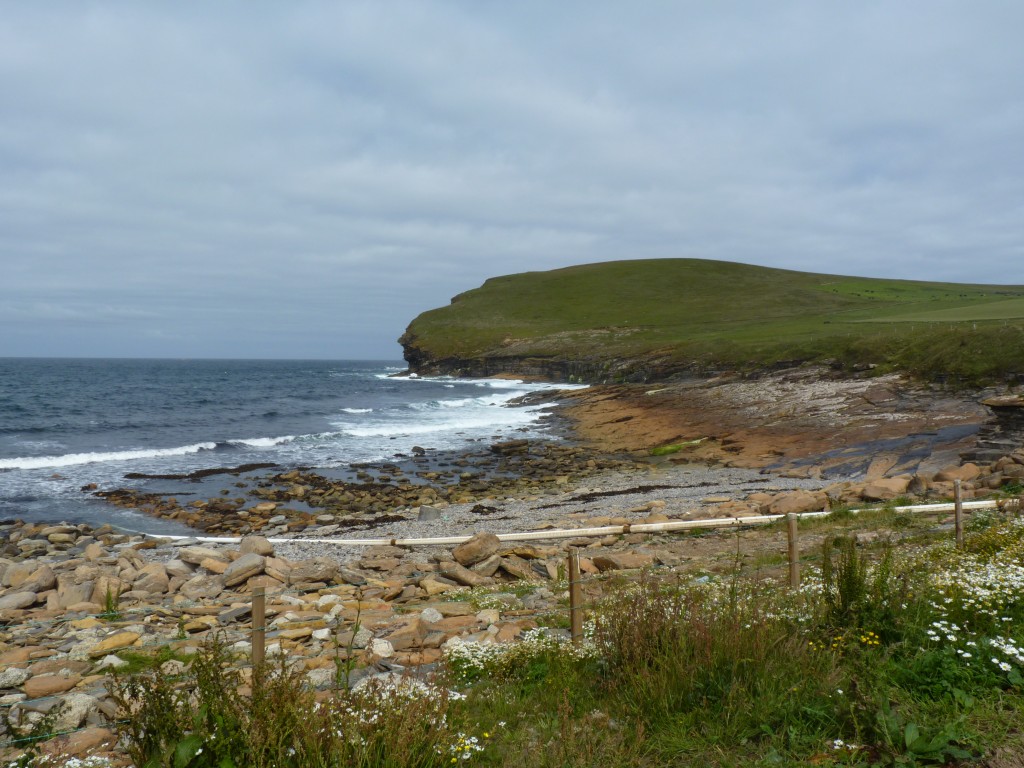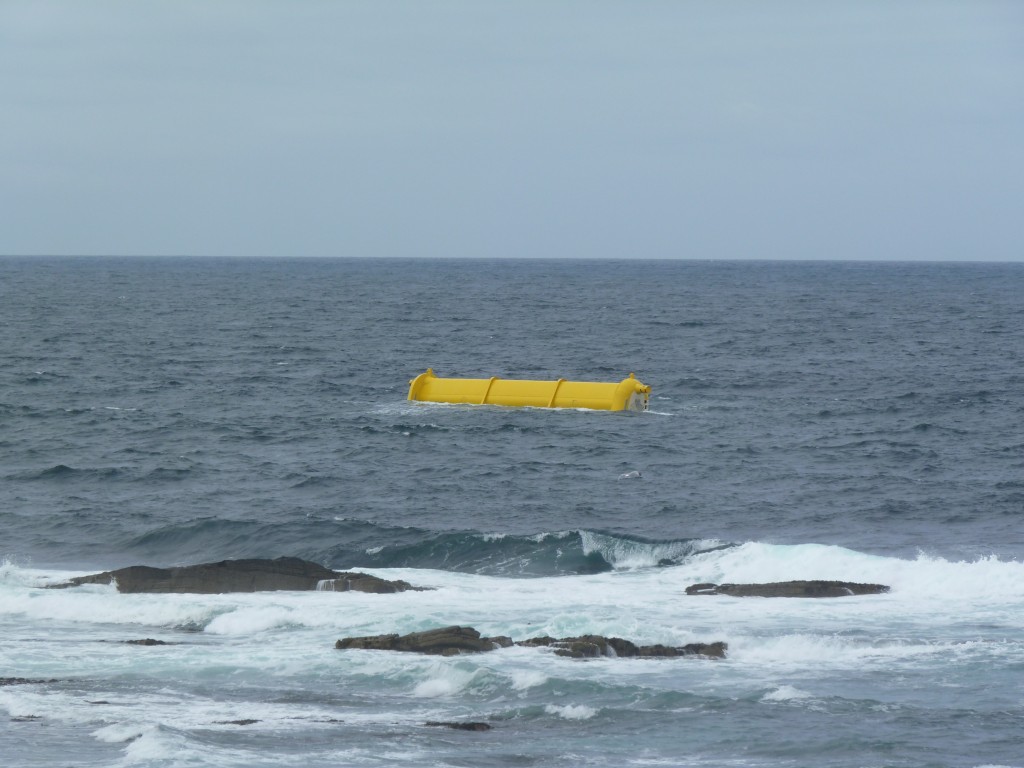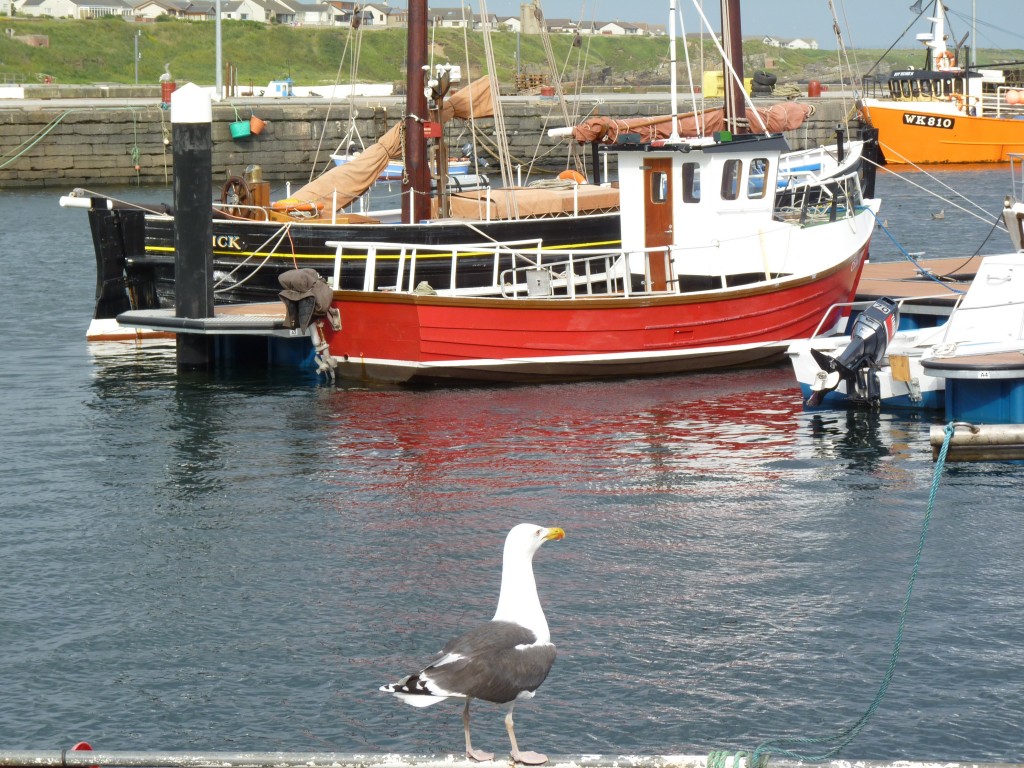Search Results for Tag: energy
Scotland’s waves surge ahead with climate-friendly energy
The waters between the north of Scotland and the Orkney islands have just been declared a Marine Energy Park. What does that mean? Well, I’m just back from a visit to the mainland coast in the Caithness region, Orkney and Edinburgh, headquarters of the Scottish government and the leading marine energy companies, where I was able to see for myself. The steady waves and strong currents of these waters make it an ideal location for devices to turn the power of the sea into electricity. I can quite understand why the Scottish and the UK governments want to heighten the international reputation of the region as a potential provider of clean, climate-friendly energy and speed up the development. Orkney is home to EMEC, the world-leading European marine Energy Centre, where developers from all over the world are testing a wide range of wave and tidal energy devices. The centre even has a grid connection, so that energy produced in the water can be fed in.
I will be writing more about this on DW’s Environment site in the weeks to come. I’ll also be reporting for our radio programe Living Planet. I certainly got the feeling that some of the marine energy devices are ready to move on from the test stage to commercial application and viability in the next couple of years.
Energy from waves or tides has the potential to generate 27GW of power in the UK alone by 2050, equivalent to the power generated from eight coal fired power stations, according to the UK government. Minister of State for Energy and Climate Change Greg Barker says the industry could sustain thousands of jobs in a sector worth a possible £15bn to the economy by 2050.
The Scottish Energy, Enterprise and Tourism Minister Fergus Ewing was equally upbeat when I interviewed him last week. More from the Minister and those directly involved in marine energy in the not-too-distant future. Meanwhile, well done Scotland for pushing ahead with renewable energy and “surfing the waves” towards the ambitious – but not unrealistic- target of 100% renewable electricity by 2020.
Antarctic research with zero emissions

Turbines to make the best of the Antarctic winds. Photo by René Robert, International Polar Foundation
If there’s one place that definitely isn’t connected to the electricity grid and can benefit from using renewable energies, it’s got to be the Antarctic. Belgium, a country that might not be the first to come to mind when you think of polar research, has its own station, the “Princess Elisabeth Antarctica” station, and it is a “zero emissions” station. The summer research season has just come to an end, and the station says it was one of its most ambitious yet.
![]() read more
read more
The “bear” facts – on Longyearbjen
I left Ny Alesund having seen most of the mesocosms deployed and everything running well.
The local Arctic fox – who apparently lives under the 1912 houses which have become the Dutch Arctic station – appeared to see me off.

I found Longyearbjen in a state of great excitement because a polar bear had drifted in on the sea ice a few days ago. I was hoping he’d come back, but so far he hasn’t. It was a big attraction, because although they are said to be all around, understandably they don’t come into town that often. The authorities were happy as long as he snoozed on his iceberg, but when he started to move around, they zapped him with a tranquillizer dart and moved him off to a “safer” location.That left the ice floes clear for the Eiders.


Longyearbjen is called after American John M. Longyear, who established the first mine here in 1906. The mining history of the settlement is in evidence everywhere, old coal shafts and the pylons which carried the rope line used to transport the coal to the port.

Coal is still mined here today. It’s controversial, Greenpeace staged a protest here last year, which has made them quite unpopular with the locals, worried about their jobs. That’s presumably one reason why up in Ny Alesund, somebody threw a seal’s head onto the deck of the Esperanza. The local newsletter ‘icepeople’, self-styled as “the world’s northernmost alternative newspaper” reported on the return of the environmentalists saying “This time Greenpeace is promising – it seems – to be good”, i.e. because they are supporting scientific research rather than protesting. The newsletter people are clearly still wary, though.
There is a test project running here for carbon capture and storage. I went to the site of the borehole with the director, Gunnar Sand.

They are testing whether the underground storage site would be safe to store 90% of emissions from the local coal-fired power plant. He says they could be up and running by 2015. But he also stresses the need for much more intensive testing, as safety is paramount. He says Longyearbjen is ideal for a pilot plant, as they have a small community with a closed system. He thinks the world will be dependent on coal for the next fifty years at least, given especially the developments in China. More later on DW radio and the website.

There’s supposed to be a population of 2000 here. I don’t know where they all are, it makes a rather empty impression most of the time. Most people I’ve met have been incomers, who tend to come for a short time, fall in love with it and stay as long as they can. Margrete Nilsdater Skaktavl Keyser is one.

Margrete came here for a short course and went on to do a full degree here. The student residences at the far end of the town show the two main attractions that seem to bring students to the uni here : snow mobiles in winter and nature all around, all year round, with plenty of potential for field work on all aspects of Arctic sciences:


Margrete came here as a student for a short course and stayed on for a longer degree, writing on polar bears. You need a job to stay here, so she takes whatever she finds and goes home to the Norwegian mainland in between.In the season, she guides people on snowmobile trips. At the moment she’s working with the Svalbard authorities compiling a data base on encounters between humans and polar bears, trying to work out guidelines for avoiding “incidents”. I’ve been keeping that in mind walking around here. You can’t leave the town area safely without a rifle, flares etc. People have been killed around here, although it’s a good few years ago.
Glaciology Professor Doug Benn, a fellow Scot who taught in my old university St. Andrews, invited me to join him and two junior colleagues for a look at the local glaciers yesterday. He’s also an active researcher into a glacial area of the Himalayas. More on that next time.
As you can see, no hikes outside town without the rifle. Doug is the one in charge of the party’s safety here:

Happy Icy New Year

Happy New Year Ice Blog readers. I have been on holiday enjoying the winter weather in Germany and the UK. A lot of people are complaining about the cold and the bad road conditions and delays on planes and trains – but I for one am happy to have a real winter. What else would you expect from the ice-blogger? Some colleagues reckon this will save me an Arctic trip…
There is a lot of talking and joking as usual about whether the extreme winter conditions will undermine the acceptance that humankind is affecting the climate.
I was interested to read in the British press today that some British newspapers have even been taking the name of Professor Mojib Latif in vain, a respected climate expert at the Leibniz Institute of Kiel University Germany – whom I have interviewed several times. Two conservative papers apparently misinterpreted his research as signalling a switch from global warming to cooling. Fortunately (i.e. in the interests of the truth and no misrepresentation) today’s edition of The Guardian puts his research into context and quotes him as affirming his strong belief in man-made global warming.Prof Latif says the cold spell is short-term “weather” and not a cooling related to ocean cooling which he describes in his work. He also compares the complexity of the climate problem to Einstein’s theory of relativity and stresses the difficulty of presenting it accurately in the media. I’ll second that, but keep doing my best.
Before I stop for today I’d like to draw your attention to a comment posted by David Scrimgeour under the last entry.
He draws attention to the question of how clean technologies are going to be trasferred across borders, and what incentives there will be for example to German companies to invest in projects in potentially risky locations. Good question, David.
I personally think companies will only go into this if they know there is a market, and a market with a future. We need clear signals from governments – which we didn’t really get in Copenhagen – but we also need to draw companies’ attention to the finance experts who say it will ultimately be cheaper to work against global warming, and to all the studies which indicate the future lies with clean technology which does not put a burden on the climate. And of course companies are ultimately interested in making a profit. Look how some energy companies have realised fossil fuels are finite and are getting into alternative renewables – to secure their future.
Any other views on this?
Schwarzenegger for Emperor?
Ammu posted a comment from the USA after attending a seminar where the experts were saying energy efficiency should be our first goal. By that he means reducing our demand for energy, matching our energy output to demand and a more efficient transformation of the resources we put in into the energy we get out. I would agree with that Ammu. But I don’t agree that we should only expand renewables in a second stage. As you say yourself, we need to combine different aspects at the same time to tackle climate change as quickly as possible. That means setting ambitious targets and creating the political and economic climate to achieve them.
I think US President Obama is starting out on the right track there, with his renewable energy targets. And that brings us to your next point. Schwarzenegger as emperor because of his old-car-scrapping policy? Hm. I think he certainly deserves recognition for what he’s doing in California for the environment and the climate, although we know he’s still struggling to sort out the economic problems he inherited. But then the President gave priority to letting Schwarzenegger and the other state governors move ahead faster than the national administration to implement tougher environmental or climate-protecting legislation when they can.
What I think is really remarkable is Obama’s will to rise above party politics in the interests of the environment and the future of the planet. If he really thought everybody else would do that – especially those in the “opposition” – then he’s pretty idealistic. But since he has the majority to push things through, he can get on with it, even if he is getting impatient with the time negotiations are taking to get his legislation package through.
I’ve been following the British media intensively over the past week or so, while I was braving the “Arctic conditions” (!?) of the British midlands. I got a strong sense that people think the new US administration is prepared to move ahead and opt for innovation much more radically than European governments, which are still too tied up with protecting their traditional car and fossil fuel industries.
So let’s give President Barack Obama a chance Ammu, before we look for another “emperor”. OK?























Feedback